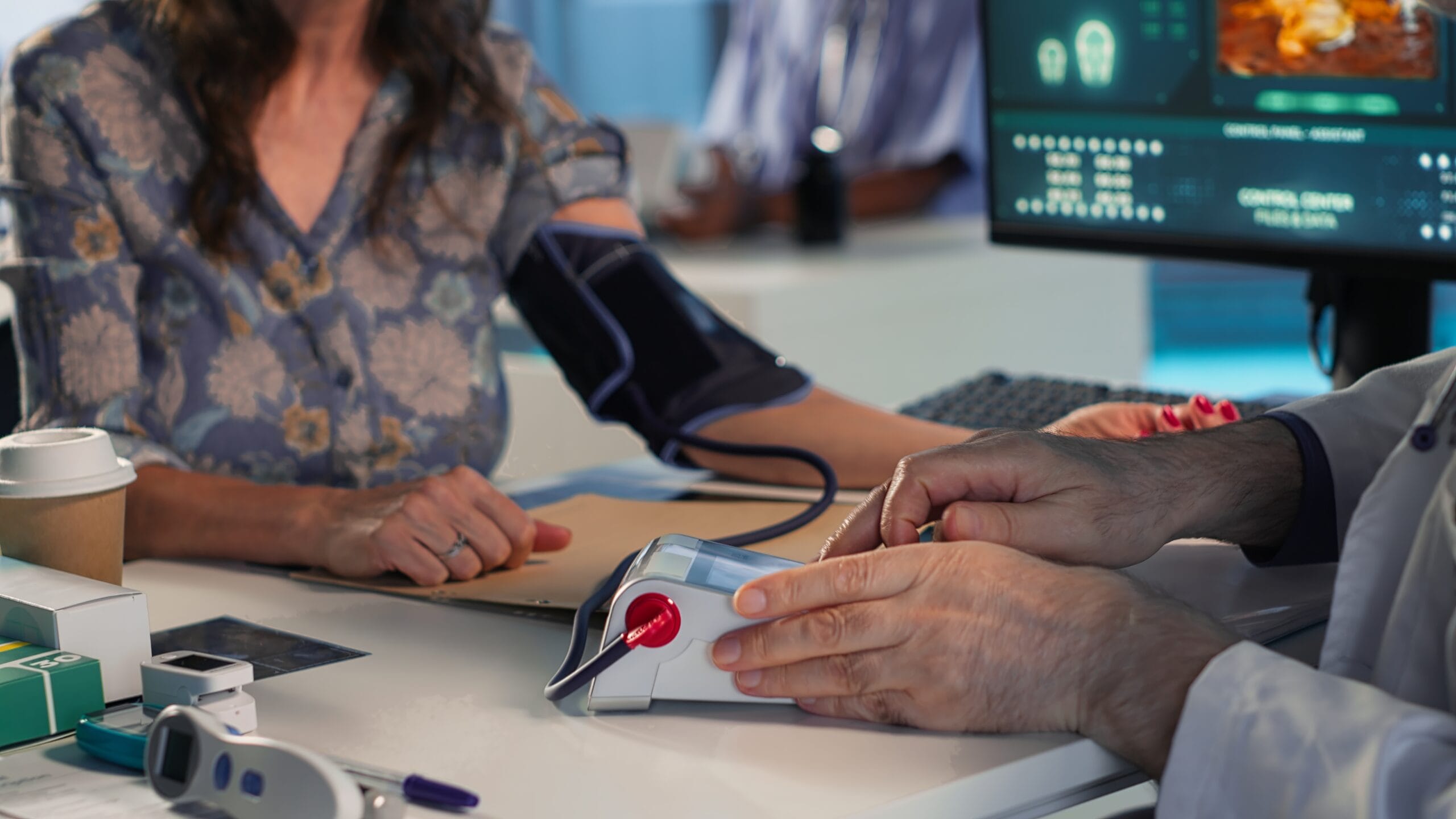RPM Billing for Chronic Conditions: Hypertension, Diabetes, and COPD
Remote Patient Monitoring billing (RPM) has become an essential part of chronic condition management in the United States. For conditions like hypertension, diabetes, and COPD, RPM allows physicians to track patient health data in real time, improve care coordination, and intervene early before complications arise. However, while the clinical benefits are clear, billing for these services is often complex and requires strict compliance with Medicare and CMS rules.
For doctors and clinics, accurate RPM billing for chronic conditions is more than just submitting claims—it directly impacts medicare reimbursement for RPM, compliance, and patient outcomes. Using the correct CPT codes, maintaining documentation, and following HIPAA and Medicare guidelines ensures providers receive fair compensation while avoiding costly denials or audits.
SmartCare360 helps healthcare providers across major U.S. cities—including New York, Los Angeles, Chicago, Houston, Phoenix, Philadelphia, San Antonio, San Diego, Dallas, and Jacksonville—streamline their RPM billing compliance rules. By offering automated workflows, compliance checks, and integrated Best Rpm Software for Doctors solutions, SmartCare360 enables clinics to focus on patient care while maximizing revenue.
Billing for chronic conditions presents unique challenges. Managing multiple patients with hypertension, diabetes, or COPD often means handling large volumes of physiological data, coordinating with different payers, and navigating complex documentation rules. Without the right system in place, providers risk underbilling, overbilling, or losing revenue opportunities.
As a trusted digital health partner, SmartCare360 simplifies the process by ensuring doctors and clinics stay compliant, reduce administrative burdens, and optimize medicare reimbursement for RPM. With the right RPM billing compliance rules support, practices can deliver better care while maintaining financial sustainability.

Understanding RPM Billing for Chronic Conditions
Remote Patient Monitoring billing (RPM) for chronic conditions refers to the process of documenting, coding, and submitting claims for ongoing patient monitoring services. It enables healthcare providers to track patient health data such as blood pressure, glucose levels, or oxygen saturation outside of the clinic setting. For doctors and clinics across the United States, RPM has become a vital component in managing long-term conditions while ensuring proper reimbursement for their services.
Why Hypertension, Diabetes, and COPD Are the Top Billed Conditions
- Hypertension: One of the most common chronic conditions in the U.S., affecting millions of patients, often requiring daily blood pressure monitoring.
- Diabetes: RPM allows real-time tracking of glucose levels, helping reduce ER visits and improving adherence to treatment plans.
- COPD (Chronic Obstructive Pulmonary Disease): Continuous monitoring of oxygen saturation and respiratory health helps physicians detect exacerbations early.
These three conditions are frequently billed under RPM because they require consistent, structured data collection and proactive interventions, which RPM devices and workflows make possible.
How RPM Improves Chronic Disease Management
- Better compliance: Regular reminders and automated device data ensure patients stick to care plans.
- Improved outcomes: Early detection of irregular readings reduces hospitalizations and emergency visits.
- Increased patient engagement: Patients feel more connected to their providers and in control of their health.
- Revenue and efficiency: Clinics can bill correctly while focusing more on care delivery instead of administrative tasks.
For providers in New York, Los Angeles, Chicago, Houston, Phoenix, Philadelphia, and other U.S. cities, this approach is transforming chronic care delivery while improving financial sustainability.
Learn more about how SmartCare360 empowers providers with advanced monitoring solutions here: Remote Patient Monitoring.
CPT Codes for Chronic Condition RPM Billing Compliance Rules
Accurate use of CPT codes is critical for clinics and physicians who bill for Remote Patient Monitoring Billing (RPM) services. These codes define how providers can be reimbursed for monitoring patients with chronic conditions like hypertension, diabetes, and COPD. Understanding and applying these codes correctly ensures compliance with Medicare and CMS guidelines while preventing claim denials.
CPT 99453 and 99454: Device Setup & Data Transmission
- CPT 99453 covers the one-time setup and patient education on using RPM devices. For chronic conditions, this includes blood pressure cuffs, glucometers, or pulse oximeters.
- CPT 99454 applies to the supply of devices and the transmission of patient data each month. This is particularly valuable for patients with diabetes or COPD, where consistent monitoring is necessary.
These codes form the foundation of RPM billing compliance rules, ensuring doctors receive reimbursement for both setup and ongoing device use.
CPT 99457 and 99458: Care Management Time
- CPT 99457 bills for the first 20 minutes of provider or care team time spent reviewing data and communicating with the patient.
- CPT 99458 accounts for each additional 20 minutes.
For chronic conditions, this interaction allows physicians to interpret data trends, adjust treatment plans, and provide personalized guidance. For example, a provider might adjust hypertension medication based on consistently high blood pressure readings.
Hypertension Billing Codes
- RPM codes allow providers to track daily blood pressure readings.
- 99453 + 99454 ensure device setup and monthly data collection.
- 99457 + 99458 cover clinical staff review of readings and patient follow-up calls.
- Physicians in urban centers like New York and Los Angeles can reduce ER visits by detecting uncontrolled hypertension early.
Diabetes Monitoring Codes
- Continuous glucose monitoring devices qualify under 99453 and 99454.
- Review of glucose fluctuations and patient counseling time are billed through 99457 and 99458.
- Clinics in Chicago, Houston, and Phoenix benefit from billing opportunities tied to RPM-supported diabetes care.
- This coding ensures physicians are reimbursed for both technology and care management.
COPD RPM Codes
- COPD patients often use pulse oximeters and respiratory monitoring devices billed under 99453 and 99454.
- Providers can bill 99457 and 99458 for time spent assessing oxygen levels, detecting early exacerbations, and providing intervention.
- In cities like Philadelphia, San Antonio, and San Diego, proactive RPM billing for COPD helps reduce hospital readmissions.
By applying these CPT codes for remote patient monitoring correctly, clinics and doctors not only meet compliance standards but also maximize revenue opportunities. Proper coding ensures patients receive consistent care while physicians are fairly compensated for their time and resources.
For a complete guide, see: CPT Codes for Remote Patient Monitoring.
Medicare Reimbursement for RPM in Chronic Care
One of the most important aspects of RPM billing for chronic conditions is Medicare reimbursement for RPM. Since many patients with hypertension, diabetes, or COPD are Medicare beneficiaries, understanding how reimbursement works is critical for clinics and providers. Medicare recognizes RPM as an essential tool in chronic disease management, allowing physicians to improve patient outcomes while being fairly compensated for their services.
Medicare Coverage for RPM in Chronic Disease Management
Medicare covers RPM services under specific CPT codes (99453, 99454, 99457, 99458) when the requirements are met. These services include device setup, monthly transmission of patient data, and time spent reviewing and interacting with patients. For chronic conditions, this allows doctors to continuously monitor patients, adjust medications, and prevent emergency room visits or hospital admissions.
- Hypertension patients can have their blood pressure monitored daily, with readings reviewed and adjustments billed appropriately.
- Diabetes patients benefit from continuous glucose monitoring, with Medicare reimbursement for RPM providers for data review and care coordination.
- COPD patients gain from ongoing oxygen and respiratory monitoring, ensuring early intervention when symptoms worsen.
This structured billing process provides clinics with a steady reimbursement stream while ensuring patients stay engaged in their care.
Medicare Adoption in U.S. Cities
Adoption of RPM billing compliance rules through Medicare reimbursement for RPM has been particularly strong in major U.S. cities where patient populations with chronic conditions are high:
- New York City: Large Medicare population, especially seniors with hypertension and diabetes. Clinics adopting RPM see reduced readmissions and stronger reimbursement cycles.
- Los Angeles: Providers utilize RPM to manage diverse patient populations, with Medicare reimbursement for RPM ensuring financial stability.
- Chicago: Diabetes management is a key driver of RPM billing, with Medicare supporting real-time monitoring and physician reimbursement.
Other cities such as Houston, Phoenix, Philadelphia, San Antonio, San Diego, Dallas, and Jacksonville also show increasing Medicare adoption for RPM services as providers recognize both clinical and financial benefits.
Compliance Requirements for Chronic Condition Billing
Medicare reimbursement for rpm comes with clear compliance obligations that clinics must follow:
- Accurate CPT Code Use: Claims must match services rendered for hypertension, diabetes, or COPD monitoring.
- Patient Consent: Providers must document patient consent before initiating RPM services.
- Device Requirements: Devices must meet Medicare’s “medical device” definition with reliable data transmission.
- Documentation Standards: Time spent, data reviewed, and patient interactions must be recorded for audit readiness.
- HIPAA Compliance: All transmitted health data must be secured and meet federal privacy standards.
For physicians, especially those in large metropolitan areas, maintaining compliance is the key to avoiding denied claims or penalties while ensuring patients benefit from continuous monitoring.
By following Medicare’s rules, clinics across the United States can maximize reimbursement, reduce billing errors, and improve patient outcomes in chronic care management.
Learn more about managing reimbursement alongside patient care here: Chronic Care Management.
RPM Billing Workflow in Chronic Care Clinics
A clear workflow is essential for successful RPM billing for chronic conditions. From patient enrollment to billing submission, each step must be carefully documented to ensure compliance and reimbursement. Clinics managing hypertension, diabetes, and COPD patients in the United States can streamline this process by following a structured billing pathway.
The typical workflow includes: patient enrollment, device setup, continuous monitoring, documentation, and claim submission. Each stage plays a vital role in ensuring providers are reimbursed correctly while patients receive consistent, high-quality care.
Enrollment & Patient Consent
The first step in RPM billing compliance rules is enrolling eligible patients and obtaining their documented consent.
- Patients with hypertension agree to share daily blood pressure readings.
- Diabetes patients consent to transmit glucose data.
COPD patients allow continuous respiratory monitoring.
Providers must ensure patients understand how devices work and confirm that participation is voluntary. Without consent, Medicare and CMS rules prohibit billing.
Data Monitoring & Documentation
Once enrolled, patients begin transmitting health data through RPM devices. Clinics must track this information and maintain detailed records.
- For hypertension, readings are logged daily and reviewed by clinical staff.
- Diabetes monitoring involves evaluating glucose fluctuations and noting interventions.
- COPD monitoring requires tracking oxygen saturation and respiratory trends.
Proper documentation includes time spent by staff reviewing patient data, care plan adjustments, and communications. This information is crucial for billing CPT codes for remote patient monitoring 99457 and 99458.
Submitting Clean Claims
Accurate billing is the final step. Clean claims mean that all information—patient consent, CPT code selection, documentation, and device use—is correctly reported.
- Common issues to avoid: duplicate billing, incorrect CPT codes for remote patient monitoring, or missing time logs.
- Using automation tools or platforms like SmartCare360 reduces errors and accelerates reimbursement cycles.
For doctors in cities such as New York, Los Angeles, and Houston, a clean claim process is essential for ensuring consistent Medicare reimbursement for rpm while minimizing administrative burdens.
By following a well-structured RPM workflow, clinics not only secure steady revenue but also enhance patient care outcomes across chronic conditions.
See a detailed guide on correct billing here: How to Bill Remote Patient Monitoring Services.
RPM Billing Compliance for Chronic Conditions
For physicians and clinics, RPM billing compliance rules is just as important as providing quality patient care. Chronic conditions like hypertension, diabetes, and COPD often require daily monitoring, but incorrect billing can lead to denials, penalties, or even audits. To maintain financial health and protect patients, providers must adhere to Medicare, CMS, and HIPAA compliance rules.
Medicare, CMS, and HIPAA Compliance Rules
- Medicare Requirements: Providers must use the correct CPT codes (99453, 99454, 99457, 99458) and document all activities, including device setup, data monitoring, and time spent in patient interaction. Patient consent is mandatory before services begin.
- CMS Guidelines: CMS requires documented proof of time spent on patient care activities, ensuring claims reflect actual services delivered. This helps prevent fraudulent or inflated billing.
HIPAA Compliance: Since RPM involves transmitting sensitive patient data, all platforms and workflows must comply with HIPAA regulations. Devices and best RPM software for Doctors must use secure, encrypted systems to protect patient privacy.
Avoiding Overbilling and Ensuring Audit Readiness
Overbilling is a common compliance pitfall, especially when clinics manage multiple patients with chronic conditions. Examples include billing without valid patient consent, recording more time than was actually spent, or double-billing for overlapping services.
To stay audit-ready:
- Keep detailed records of all device transmissions and provider interactions.
- Ensure staff are trained to log time accurately.
- Use billing platforms that flag inconsistencies before claims are submitted.
By implementing these practices, clinics reduce the risk of recoupments and strengthen their compliance standing with Medicare and CMS.
City Example: Compliance in Houston and Philadelphia Clinics
In major healthcare hubs like Houston and Philadelphia, RPM adoption for chronic conditions is widespread, which also means increased scrutiny of billing practices. Auditors frequently review claims to ensure RPM services for hypertension, diabetes, and COPD meet compliance standards.
- Houston-based clinics that successfully integrate audit-ready workflows report fewer denials and more consistent revenue cycles.
- In Philadelphia, compliance-driven billing strategies have helped providers balance patient engagement with financial sustainability.
Maintaining compliance is about more than avoiding penalties—it’s about building trust with patients and payers while ensuring long-term financial stability. With tools like SmartCare360’s compliance-driven workflows, clinics across the United States can monitor patients effectively, prevent billing errors, and safeguard revenue.
Learn more about ensuring compliant reimbursement cycles here: Revenue Cycle Management.
Common RPM Billing Mistakes with Chronic Conditions
While RPM billing for chronic conditions provides valuable reimbursement opportunities for clinics, errors in billing can lead to denied claims, revenue loss, or compliance risks. Providers managing hypertension, diabetes, and COPD must pay careful attention to the most common mistakes that impact RPM billing.
Incorrect CPT Code Use
Using the wrong CPT code—or applying it incorrectly—is one of the most frequent RPM billing mistakes. For example, billing CPT 99457 without documenting the required 20 minutes of interactive communication will likely result in denials. Similarly, misusing CPT 99453 or 99454 for patients who don’t meet Medicare’s device requirements can create compliance issues.
Missing Documentation
Incomplete or missing documentation is another major cause of revenue loss. Medicare and CMS require proof of:
- Patient consent before enrollment.
- Device setup and data transmission.
Time logs for provider interactions.
Without this, even correctly chosen codes may be denied.
Billing RPM + CCM Incorrectly
RPM and Chronic Care Management (CCM) services can both be billed for the same patient, but providers must ensure services are distinct and not double-counted. For example, RPM focuses on physiological data like blood pressure or glucose levels, while CCM involves broader care coordination. Billing both incorrectly often leads to audits and repayment demands.
For private practices in cities like San Antonio, San Diego, or Dallas, where clinics manage diverse patient populations, these mistakes can significantly impact reimbursement cycles.
By avoiding these pitfalls, clinics can ensure smoother claim submissions, maximize Medicare reimbursement for rpm, and focus more on improving patient outcomes.
Discover more tailored support for smaller practices here: Private Practice Clinics.
RPM vs RTM Billing for Chronic Conditions
In chronic care management, it’s important to distinguish between Remote Patient Monitoring billing (RPM) and Remote Therapeutic Monitoring (RTM) because both have unique roles, billing codes, and reimbursement guidelines.
RPM = Physiological Data
RPM billing compliance rules used when clinics monitor physiological data through FDA-approved devices. This includes metrics such as blood pressure for hypertension, glucose readings for diabetes, or oxygen saturation for COPD. CPT codes for remote patient monitoring like 99453, 99454, 99457, and 99458 are used, covering device setup, transmission, and provider time. RPM has become an essential tool for chronic disease clinics because it supports early intervention, reduces hospitalizations, and enhances patient compliance.
RTM = Musculoskeletal & Respiratory Therapy
In contrast, RTM billing applies to the monitoring of musculoskeletal and respiratory therapy adherence, often for conditions like asthma, COPD rehabilitation, or physical therapy recovery. RTM uses codes such as 98975, 98976, and 98977 for setup and data collection, and 98980, 98981 for provider interaction time. Unlike RPM, RTM does not require FDA-approved devices and can include best RPM software for doctors based solutions like patient-reported outcomes apps.
Importance for Chronic Care Clinics
For clinics treating large patient populations in cities like Dallas, Phoenix, or Philadelphia, understanding whether a service qualifies as RPM or RTM is critical. Using the wrong category could result in denied claims or compliance issues. For instance, glucose monitoring belongs under RPM, while monitoring adherence to a COPD inhaler plan may fall under RTM.
By separating these billing streams, providers can capture the correct reimbursements while tailoring care to each patient’s condition. As CMS continues to expand coverage for both, clinics leveraging RPM and RTM together gain a strategic advantage in chronic care management.
Learn more about RTM applications here: Remote Therapeutic Monitoring.
Best RPM Billing Tools for Doctors Managing Chronic Conditions
For doctors and clinics managing patients with hypertension, diabetes, and COPD, the right RPM billing tools can make the difference between smooth reimbursement cycles and frustrating claim denials. Technology is no longer just about patient monitoring—it also streamlines billing, documentation, and compliance.
Features Clinics Need
The best RPM billing platforms include:
- Automation: Reduces manual work by auto-generating claims and tracking billable time.
- EHR Integration: Syncs with existing electronic health records for seamless documentation.
- Compliance Alerts: Flags errors, missing documentation, or overbilling risks before claim submission.
- Analytics & Reporting: Helps clinics identify revenue trends and patient engagement gaps.
- Scalability: Supports multi-provider practices and clinics serving hundreds of chronic care patients.
These features allow practices to focus on patient outcomes while ensuring accurate reimbursement.
How SmartCare360 Helps Clinics Nationwide
SmartCare360’s digital health platform provides end-to-end RPM support, helping doctors in major U.S. cities like New York, Los Angeles, Chicago, Houston, and Phoenix simplify billing workflows. The platform integrates with top EHR systems, automates CPT coding, and ensures CMS-compliant documentation for Medicare reimbursement.
For clinics in San Antonio, San Diego, Dallas, Jacksonville, or Philadelphia, SmartCare360 also offers compliance alerts to prepare for audits and reduce denial risks. With user-friendly dashboards and patient engagement tools, doctors can not only track chronic conditions effectively but also maximize their RPM billing potential.
By combining automation, compliance, and patient care tools, SmartCare360 positions itself as a trusted partner for clinics aiming to improve outcomes while maintaining financial stability.
Explore how SmartCare360 supports primary care practices here: Primary Care Landing Page.
Conclusion – Smarter Billing, Better Care
Chronic conditions such as hypertension, diabetes, and COPD place heavy demands on clinics, but Remote Patient Monitoring Billing (RPM) helps providers deliver continuous care while receiving fair reimbursement. With CPT codes for remote patient monitoring designed for device setup, data collection, and provider interaction, RPM empowers clinics to manage chronic diseases more effectively while improving patient outcomes.
The challenge, however, lies in navigating compliance requirements, avoiding coding errors, and ensuring proper documentation. This is where SmartCare360 plays a critical role. By offering automation, EHR integration, compliance alerts, and streamlined billing workflows, SmartCare360 reduces the risk of claim denials and maximizes revenue potential for practices of all sizes.
For doctors across major U.S. cities like New York, Los Angeles, Chicago, Houston, Phoenix, and beyond, SmartCare360 acts as a trusted partner—helping them stay audit-ready, improve efficiency, and dedicate more time to patient care.
Smarter billing doesn’t just support financial stability; it enhances patient outcomes by ensuring resources are directed where they are needed most.
Take the next step in optimizing your practice with SmartCare360. Learn how our solutions empower both providers and patients here: Patient Education.
Frequently Asked Questions About RPM Billing for Chronic Conditions
What is RPM billing for chronic conditions?
RPM billing refers to reimbursement for remote monitoring of patients with chronic diseases like hypertension, diabetes, and COPD. Medicare recognizes these services under specific CPT codes, helping clinics provide continuous care while receiving payment for device setup, data collection, and provider interaction time.
Which CPT codes are used for chronic conditions?
The most common RPM billing codes are 99453 (device setup), 99454 (data transmission), 99457 (20 minutes of provider time), and 99458 (additional 20 minutes). These codes ensure providers are compensated for both technology use and ongoing patient management.
Does Medicare cover RPM for diabetes and hypertension?
Yes, Medicare covers RPM for chronic conditions such as diabetes and hypertension, provided that requirements are met. Clinics must use FDA-approved devices, obtain patient consent, and submit proper documentation to qualify for reimbursement.
How do clinics reduce RPM billing denials?
Clinics can reduce denials by ensuring complete documentation, correct CPT code use, and patient consent records. Automation tools, compliance alerts, and EHR integration also help practices submit clean claims that meet Medicare and CMS guidelines.
Is RPM billing different from CCM billing?
Yes. RPM billing is focused on monitoring physiological data like blood pressure or glucose readings, while CCM (Chronic Care Management) covers care coordination and planning. Both can be billed for the same patient if services are clearly documented and non-duplicative.
What are the most common RPM billing mistakes?
Typical mistakes include using incorrect CPT codes, failing to document provider time, missing patient consent, and double-billing RPM with CCM. These errors can trigger claim denials or audits, reducing overall reimbursement.
How much revenue can RPM add to a small practice?
Revenue varies by patient volume. A small practice managing 50–100 chronic patients could generate thousands in additional monthly income. Medicare reimbursement rates for RPM make it a strong revenue stream when paired with consistent documentation.
Can SmartCare360 help with RPM billing audits?
Yes. SmartCare360 provides compliance alerts, audit readiness tools, and accurate documentation workflows. Clinics can reduce risks of overbilling and ensure claims meet Medicare and CMS audit standards.
Do private practices in NYC and LA benefit from RPM billing?
Absolutely. Clinics in large cities like New York and Los Angeles benefit from RPM billing by improving reimbursement opportunities and providing proactive chronic care to diverse patient populations, leading to better outcomes and reduced hospitalizations.
Can one patient qualify for both RPM and CCM billing?
Yes, a single patient can qualify for both RPM and CCM billing if the services are distinct and separately documented. RPM tracks device-generated data, while CCM focuses on broader care planning and coordination.
How does RPM improve outcomes for chronic conditions?
RPM enables real-time data tracking, early intervention, and better patient engagement. This leads to fewer complications, reduced hospitalizations, and stronger compliance with treatment plans—especially valuable for conditions like diabetes, COPD, and hypertension.
Are RPM devices covered by Medicare?
Yes, Medicare covers FDA-approved RPM devices, but coverage depends on compliance with CMS rules. Devices must automatically record and transmit physiological data for them to qualify for reimbursement.
What documentation is required for RPM billing?
Required documentation includes patient consent, device setup records, transmission logs, and time spent in interactive communication. Without these details, even properly coded claims may be denied by Medicare.
How do SmartCare360’s tools support billing compliance?
SmartCare360 automates claim generation, integrates with EHR systems, and provides compliance alerts. This reduces coding errors, ensures CMS documentation standards are met, and helps practices stay audit-ready.
Can RPM be billed for COPD management?
Yes, COPD patients are eligible for RPM billing if monitored with FDA-approved devices that track respiratory metrics. Providers must document time spent reviewing data and communicating with patients to bill Medicare appropriately.
What is the difference between RPM and RTM billing?
RPM bills for physiological data collection like blood pressure or glucose, while RTM (Remote Therapeutic Monitoring) covers musculoskeletal or respiratory therapy adherence. Both have unique CPT codes and Medicare requirements.
Are there city-specific benefits of RPM billing?
Yes. Cities like Houston, Chicago, and Philadelphia see higher RPM adoption due to large Medicare populations. Local clinics benefit from both revenue gains and improved chronic condition management outcomes.
Why should clinics partner with SmartCare360 for RPM billing?
SmartCare360 streamlines billing, reduces compliance risks, and maximizes reimbursement. Clinics across U.S. cities—from New York to Dallas—trust the platform to simplify RPM workflows and improve both financial and patient care results.












